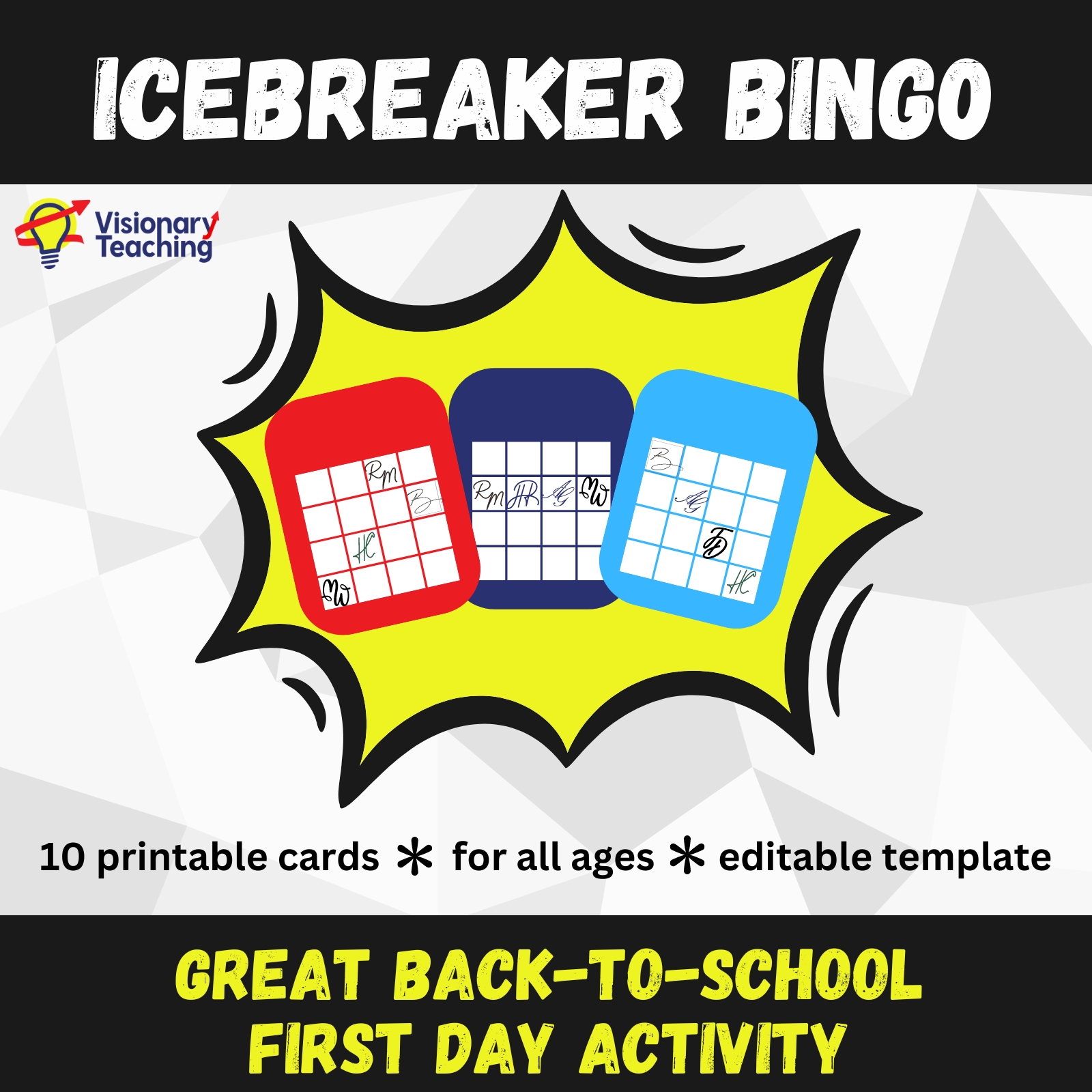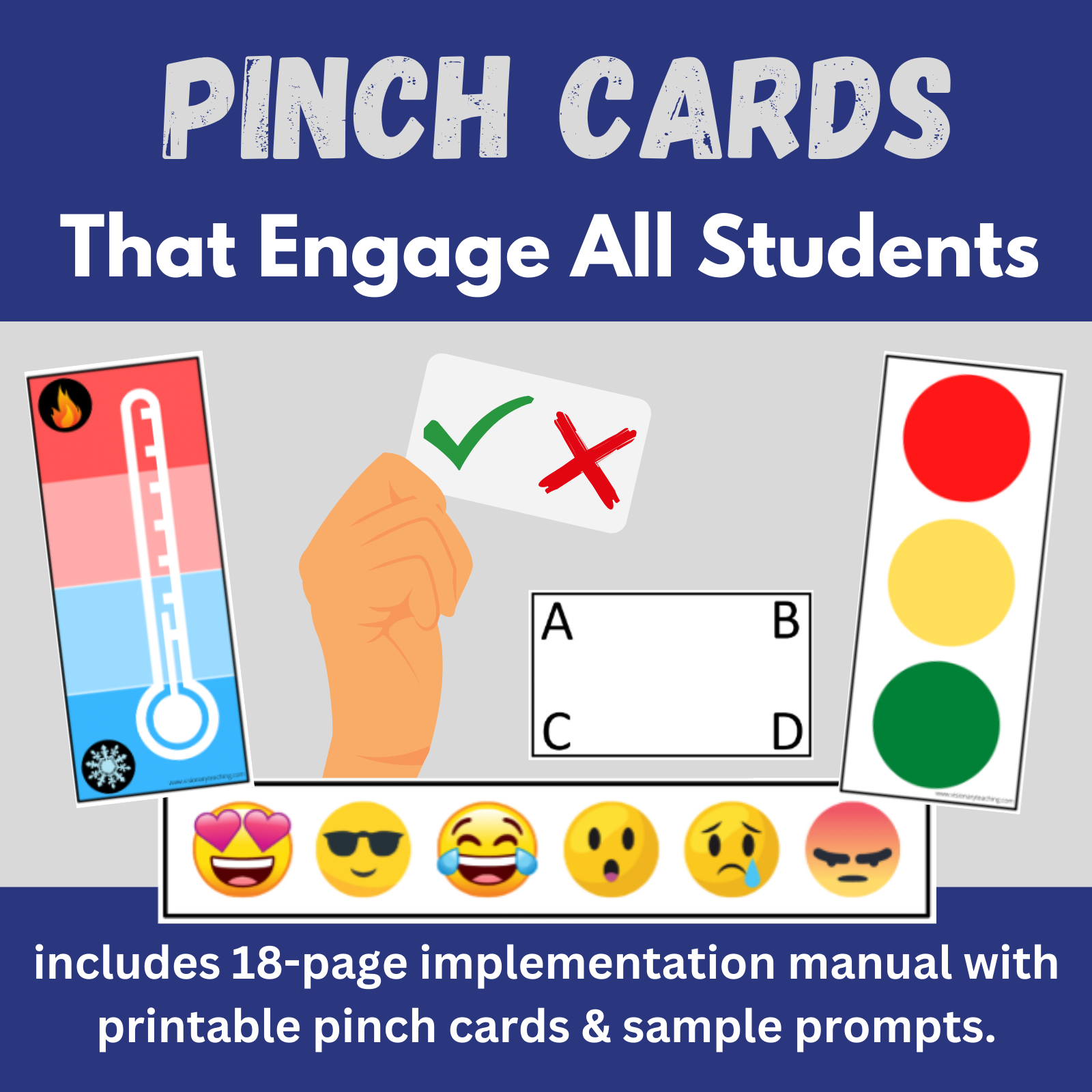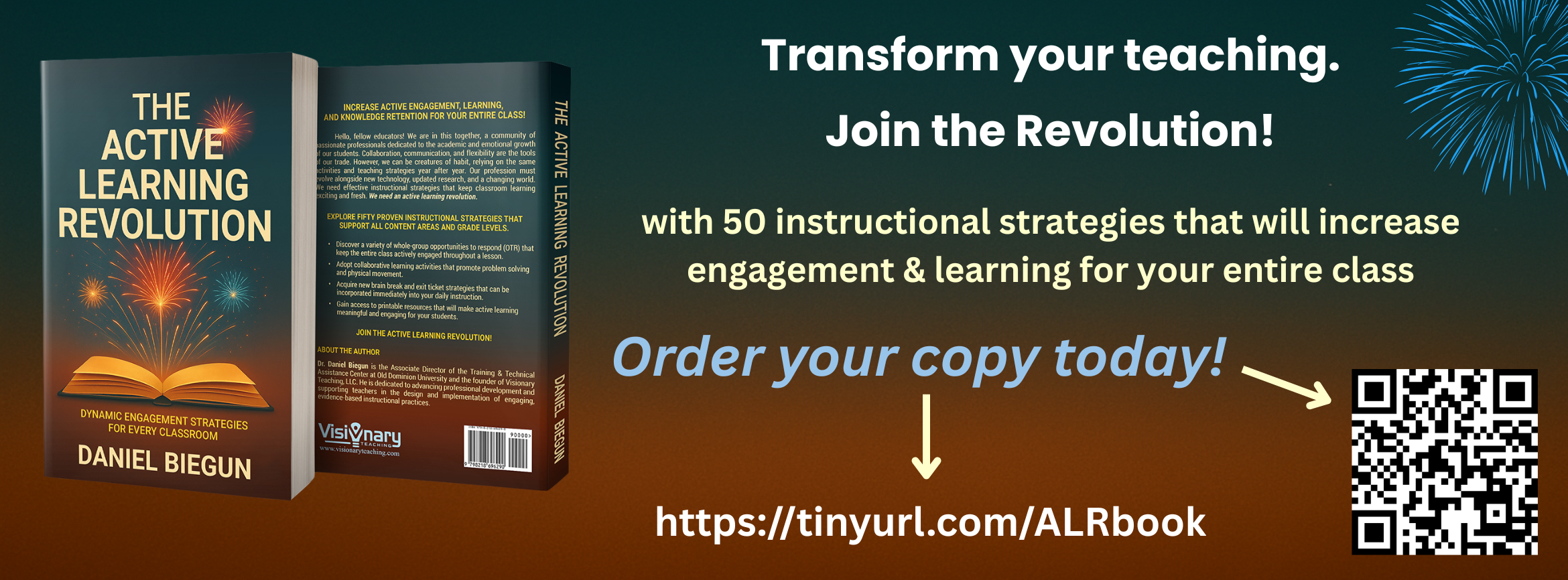
Have you ever smelled something that instantly took you back to another time or place? Perhaps you have tasted a particular food, felt a texture, or heard a song that brought back distant, but powerful memories. If one particular sense can bring back such memories, imagine the impact of multisensory instruction!
In this article, we will look at the science behind our 5 senses and how this knowledge can help make our instruction more engaging and more memorable. I will offer a few great ideas for incorporating the 5 senses into instructional practices. Look for another blog post in the near future where we will explore some specific ideas for activating each of the senses during instruction for students of all ages and content areas.
Multisensory Instruction
The term multisensory instruction is often associated with reading instruction, particularly for learners with dyslexia. As with many supports that are typically offered to students with disabilities, multisensory instruction should be viewed through a lens of Universal Design for Learning, as is it can be beneficial to all learners.
Multisensory instruction involves lessons and activities that simultaneously engage multiple senses. Educators commonly design lessons that are full of visual information such as text, pictures, diagrams, and videos. Information is often presented auditorily as well, including teacher talk and class discussions. It is equally important to purposefully build in opportunities for our learners to experience new information through touch, smell, and taste.
The Science Behind Learning with Our Senses
While each of the 5 senses can influence memory recall in some form or fashion, there is a definite hierarchy. Here they are, in order from strongest to weakest:
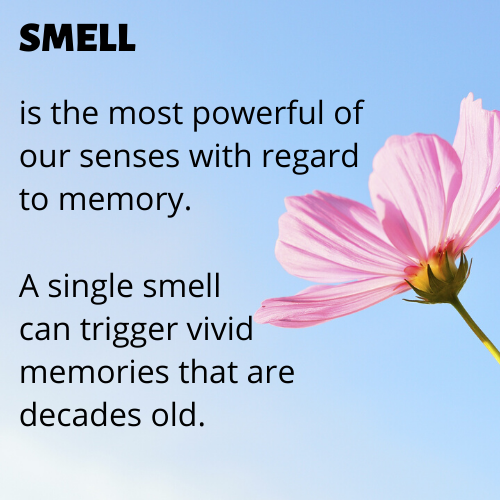
Several theories attempt to explain the link between smell and memory. Sparing you all of the cumbersome medical terminology, the general idea is that the respective parts of the brain that process smell and retrieve memories are located in close proximity to each other. Another thought is that olfactory (smell) information travels directly to the brain, whereas information associated with the other senses take longer routes.
Think about smells that have triggered vivid memories for you. For me, freshly cut grass takes me back to a particular soccer field in Texas, while gasoline takes me to my uncle’s garage in upstate NY in 1987. Have you recently smelled something that brought back a fond memory?
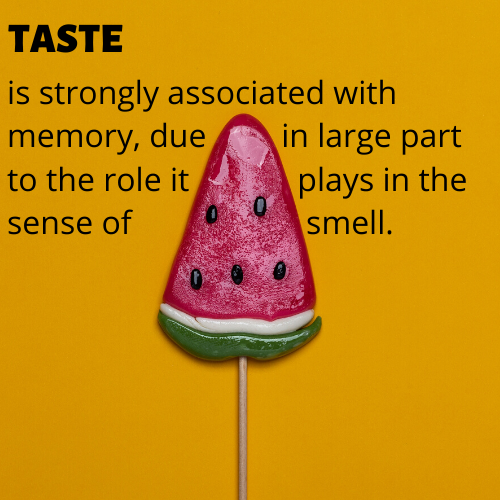
As you are likely aware, smell plays an important role in the sense of taste. It seems that the relationship may have developed as a matter of life and death. One theory is that our ancestors, who had to forage for food, required a great memory of various tastes in order to avoid eating toxic plants.
Incorporating taste into learning opportunities can be both engaging and impactful. Learners can experience memorable sensory input related to stories, cultures, or historical events. I can still taste the hard tack from a 7th grade Civil War unit.
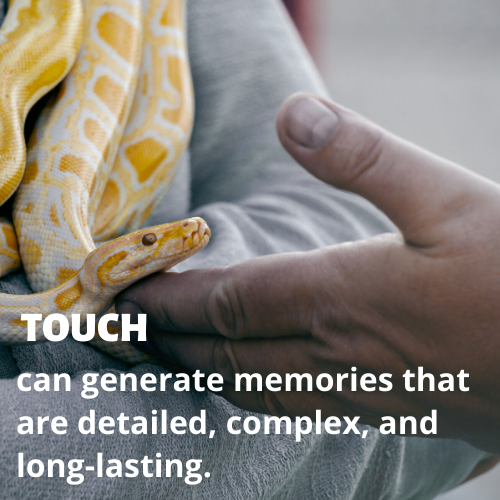
Though not researched as widely as smell, the sense of touch has also been associated with long-lasting and vivid memories. We use touch to classify objects and determine their temperature, texture, or sturdiness.
We are able to learn new information by touching, exploring, or manipulating tangible items. Think of information that you have learned by touching something. This is how we learn that snow is cold and tree bark is rough.
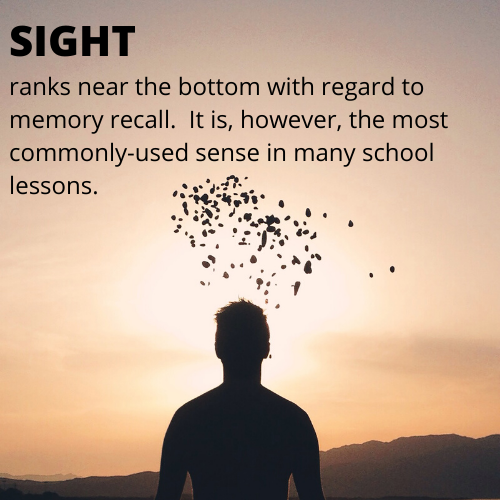
I probably don’t need to spend much time making a case for the use of sight during lessons. I see evidence of this (pun totally intended) every time I visit a classroom. Textbooks, models, worksheets, photographs, diagrams, interactive white board activities, and videos all rely on the sense of sight. Please remember that although the sense of sight appears lower in our hierarchy, it is still important and powerful. Seeing is believing, right?
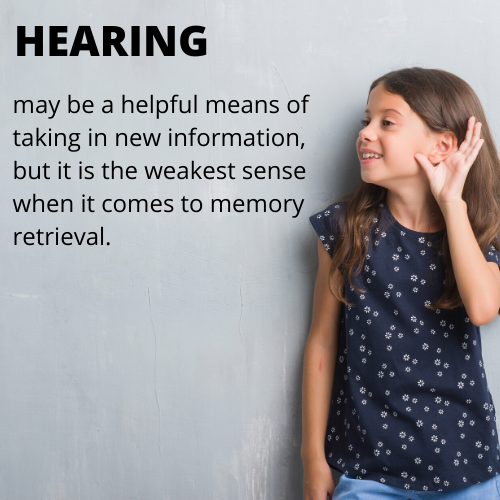
I recently heard an interesting take on how our brains connect sound and memory. Our brains record and catalog our memories as “mental films” and certain sounds become the soundtracks to those films. Our brains log various “sound bites” of things that we have experienced.
So, what are the implications for teaching? First, take advantage of the impact that hearing can have on the ability to process and learn. Second, use sounds or music to create a soundtrack for your students’ mental films. Consider playing background music that brains will connect to certain lessons that you are teaching.
We have acknowledged that each of the 5 senses can support learning and memory. It is also clear that taking in new information through multiple senses can only increase learning and retention.
Perhaps the most important thing to realize is that multisensory instruction is not exclusively for literacy instruction or students with disabilities. Using all of the senses offers engaging and effective instruction for everyone, regardless of age or content. How can you get your students smelling, tasting, touching, seeing, and hearing?
Check back soon for some specific ideas and strategies for incorporating multisensory instruction across various lessons and content areas. Happy teaching!


